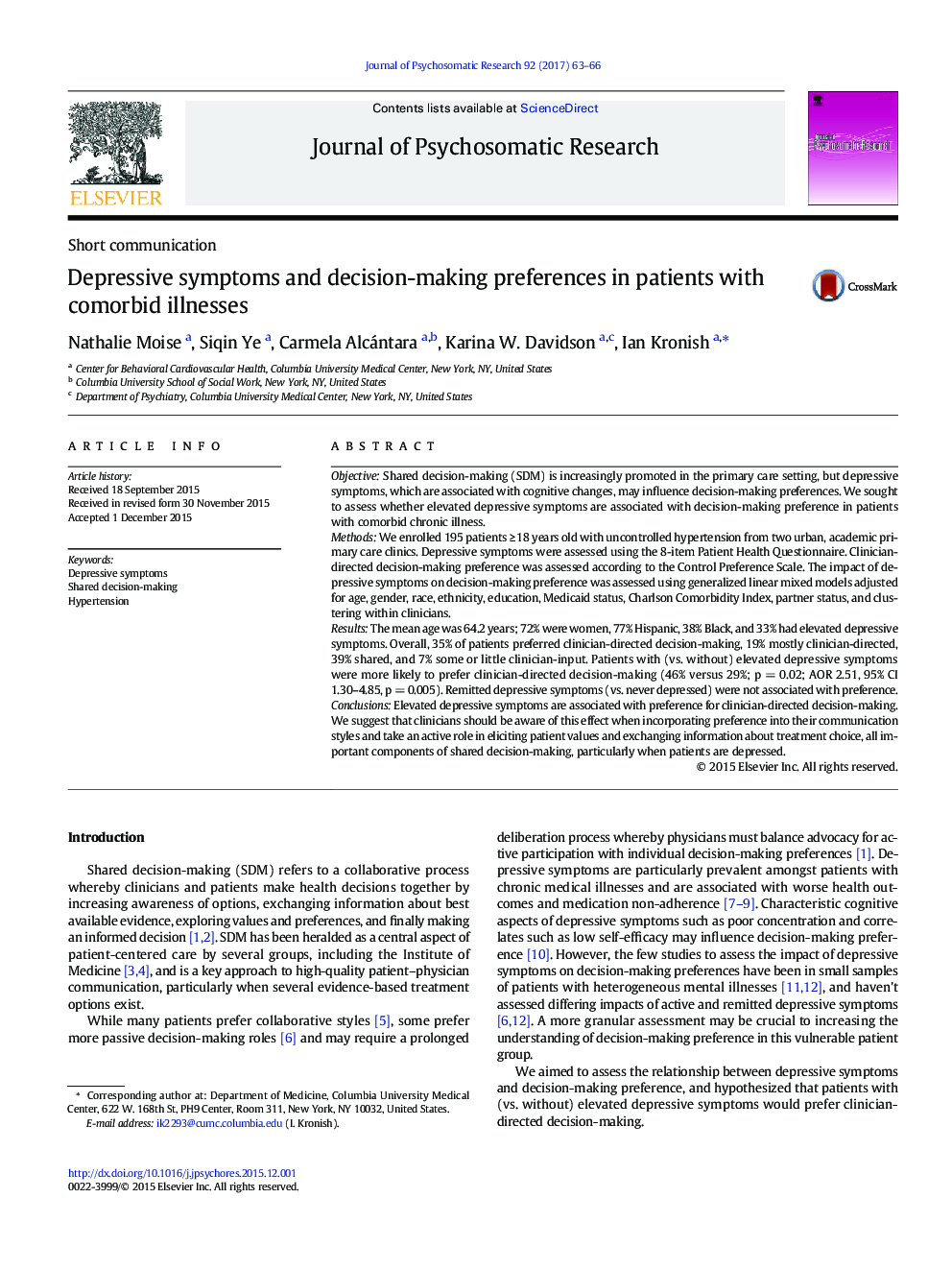| کد مقاله | کد نشریه | سال انتشار | مقاله انگلیسی | نسخه تمام متن |
|---|---|---|---|---|
| 5045870 | 1475903 | 2017 | 4 صفحه PDF | دانلود رایگان |
- Patients with elevated depressive symptoms prefer clinician-directed medical decision-making
- Cognitive symptoms of depression may affect decision-making preferences
- Physicians should be mindful of this association when incorporating preferences into the shared decision-making process
- Physicians can an active role in information exchange and value assessments, both hallmarks of shared decision-making
ObjectiveShared decision-making (SDM) is increasingly promoted in the primary care setting, but depressive symptoms, which are associated with cognitive changes, may influence decision-making preferences. We sought to assess whether elevated depressive symptoms are associated with decision-making preference in patients with comorbid chronic illness.MethodsWe enrolled 195 patients â¥Â 18 years old with uncontrolled hypertension from two urban, academic primary care clinics. Depressive symptoms were assessed using the 8-item Patient Health Questionnaire. Clinician-directed decision-making preference was assessed according to the Control Preference Scale. The impact of depressive symptoms on decision-making preference was assessed using generalized linear mixed models adjusted for age, gender, race, ethnicity, education, Medicaid status, Charlson Comorbidity Index, partner status, and clustering within clinicians.ResultsThe mean age was 64.2 years; 72% were women, 77% Hispanic, 38% Black, and 33% had elevated depressive symptoms. Overall, 35% of patients preferred clinician-directed decision-making, 19% mostly clinician-directed, 39% shared, and 7% some or little clinician-input. Patients with (vs. without) elevated depressive symptoms were more likely to prefer clinician-directed decision-making (46% versus 29%; p = 0.02; AOR 2.51, 95% CI 1.30-4.85, p = 0.005). Remitted depressive symptoms (vs. never depressed) were not associated with preference.ConclusionsElevated depressive symptoms are associated with preference for clinician-directed decision-making. We suggest that clinicians should be aware of this effect when incorporating preference into their communication styles and take an active role in eliciting patient values and exchanging information about treatment choice, all important components of shared decision-making, particularly when patients are depressed.
158
Journal: Journal of Psychosomatic Research - Volume 92, January 2017, Pages 63-66
